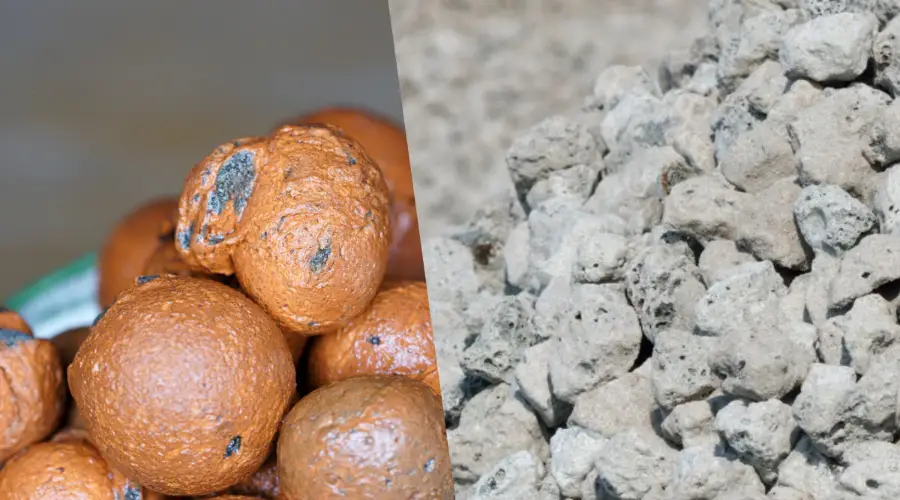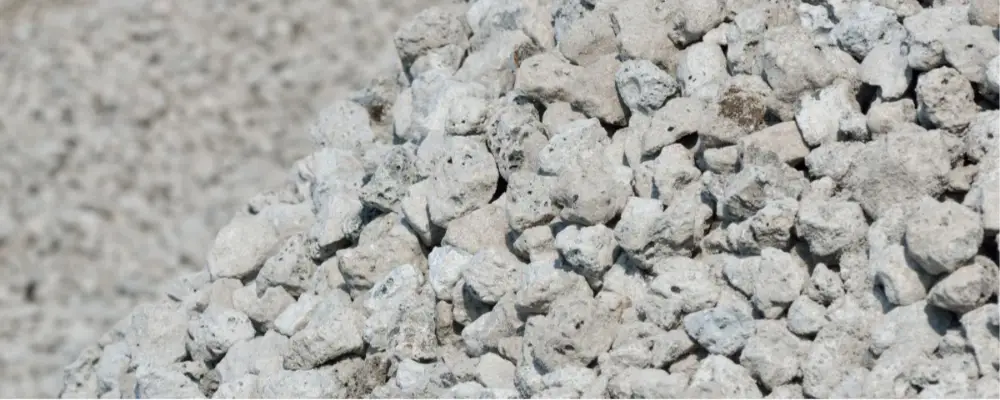In modern-day construction, lightweight aggregate offers a solution to reduce the weight of structures without diminishing their strength and durability. The materials of lightweight aggregates are less dense than traditional aggregates. This helps produce lightweight concrete and is preferred by many builders for various structural and non-structural applications. This article dives deep into the subject matter of lightweight aggregate and what role it plays in the construction sector.
What is Lightweight Aggregate?
It is a rough aggregate used in the production of lightweight concrete products. Some concrete products are concrete blocks, structural concrete, and pavements. The shape of the lightweight aggregate varies and some of the commonly available ones are cubical, rounded and angular. The constructor cannot neglect the shape and texture as insignificant as they both influence the workability of the structure. Lightweight aggregates can generally easily achieve the compressive strength needed for normal construction. Lightweight aggregates do not have a standard density value as the density value is often swayed by factors such as mixture proportion, air content, water demand, density and moisture content.
Types of Lightweight Aggregates

In the construction sector, lightweight aggregates have been divided into three types based on their origin, production process and application. These are:
- Industrial waste lightweight aggregate: This aggregate includes materials processed by industrial wastes such as fly, ceramsite, expanded slag bag, cinder, and light sand.
- Natural aggregate: This type of aggregate uses naturally occurring materials such as pumice (volcanic rock), scoria (volcanic material, much denser and darker in colour), diatomite (sedimentary rock), volcanic tuff (lightweight rock from volcanic ash).
- Artificial lightweight aggregate: This aggregate includes local materials like clay ceramsite, expanded perlite, and others. This also includes sintered aggregate, foamed aggregate, and processed by-product aggregate.
Applications of Lightweight Aggregate in Construction
- Lightweight aggregates are used in screeds and thickening, making the job of smoothing or thickening easily achievable.
- It can also be utilised in screeds and walls where wood is fastened together.
- The lightweight aggregate can even provide resistance against fire and corrosion when castigated with structural steel.
- The heat-resistant property of light aggregates makes them suitable for roofing as they act as a heat insulation material.
- It can even be used as an insulator for water pipes.
- It can be used to make partition walls and panel walls in framed structures.
Properties of Lightweight Aggregates
- The compressive design strength of concrete that uses lightweight aggregate is 17-18N/mm^2 which is lesser in comparison to that of normal concrete’s compressive strength.
- Again, the density of lightweight aggregate is lesser than normal concrete and the values range between 500 kg/m^3 to 1800 kg/m^3
- Lightweight aggregate can be in any shape including cubical, rounded and angular. The texture and form influence the workability of lightweight aggregate to a great extent.
- Lightweight aggregates maintain low density and absorb little water.
- It has a high saturation level and can reduce the structural load, making it economically viable.
- The low thermal conductivity in them makes them the perfect option for roofing.
- Lightweight aggregates generally possess good acoustic properties.
Benefits of Using Lightweight Aggregate in Construction
Lightweight aggregates provide a number of advantages, making them an essential material in modern construction. The key noticeable advantages of lightweight aggregate are structural performance enhancement, reduced costs, and enhanced sustainability. Other key benefits in the construction sector are
- Lightweight aggregates reduce the load on foundations and structural elements by reducing the weight of the concrete. This makes them ideal for skyscrapers and long-span structures. The feature facilitates innovative designs.
- The reduced weight of concrete makes transportation easier and reduces labour and equipment requirements. In addition, they also make it easier for placement and shaping in precast and modular construction.
- The porous structure in lightweight aggregate produces thermal insulation, reducing heating and cooling costs in buildings. This makes the material suitable for places where temperature stability is crucial.
- Natural materials such as expanded clay or pumice provide excellent fire-resistance properties, enhancing safety and reducing the risk of structural collapse under fire conditions.
- Industrial-based aggregates produce a better option for the reuse of by-products with sustainable construction practices.
- The porous nature and flexibility prevent freeze-thaw cycles and at the same time prevent moisture entry and chemical attacks.
Manufacturing of Lightweight Aggregates
While the majority of aggregate materials such as clay, shale or slate can be substituted, in preparation the raw material is extended to twice its original volume. This helps to create a lightweight aggregate. The detailed procedure behind the manufacturing of lightweight aggregates is as follows:
Extraction: This step is also known as quarrying in which several crushers are used to crush the material. The finished product is then screened for quality.
Sizing: The finished materials are returned to the crushers. Thereafter, the material is recycled and moved to hoppers.
Reaction: The material from the hopper is moved into a rotary kiln at 1200 degrees Celsius. The carbonaceous compounds liquefy and form gas bubbles. These gas bubbles at high temperature expand the material.
Cooling: The clinker is cooled and shaped into a porous material. The lightweight aggregate material may be crushed again if necessary and is then stockpiled after it has cooled down.
Conclusion
With their ability to fulfil the long-standing needs of structural efficiency alongside sustainability, lightweight aggregates seem to have been a transforming material in the construction domain. Reducing the structural load without weakening the strength, lightweight aggregates facilitate innovative ideas and cost-effective solutions within the realms of design capabilities. Applications from screed to roofing, fire resistance, and thermal and acoustical insulation, further bring out their wide scope and significance in construction. The use of natural and industrial waste aggregates further underlines the adaptability and eco-friendliness of the material, furthering sustainable building practices by using by-products and conserving resources. Lightweight aggregate manufacture requires advanced processes that are optimised to provide the right properties for modern construction requirements. Whether it is to be used for structural or non-structural purposes, lightweight aggregates become an imperative in achieving the goals of efficient, durable, and sustainable construction for the 21st century.

